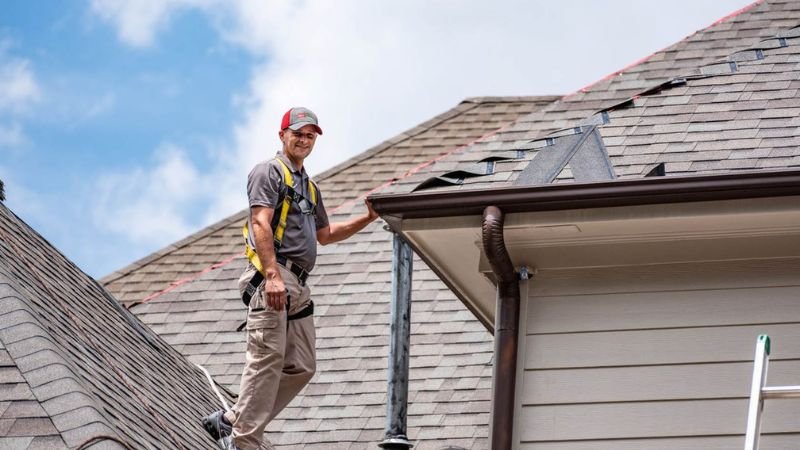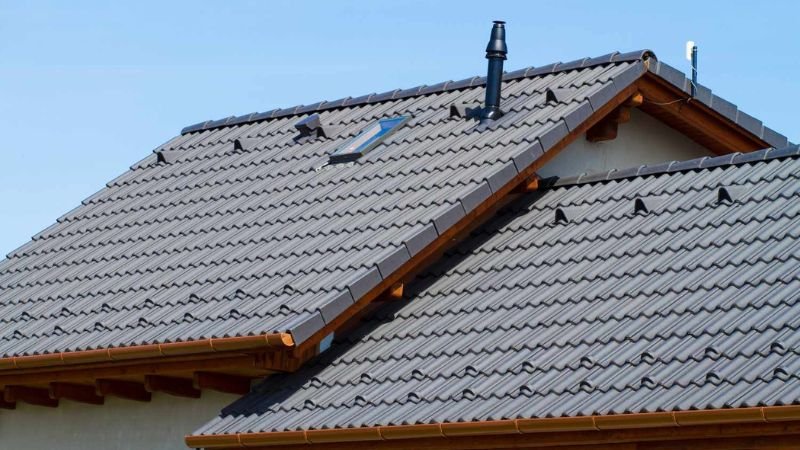When it comes to roofing, having the right tools can make all the difference in ensuring a job well done. Whether you’re a seasoned contractor or just starting out, equipping yourself with essential roofing tools is crucial for efficiency, safety, and quality workmanship. In this blog, we’ll explore the nine must-have roofing tools that every contractor should use. From basic hand tools to advanced equipment, each tool plays a vital role in helping you achieve professional results. Let’s dive into the essential tools that will elevate your roofing projects and ensure you’re always prepared for any task.
9 Roofing Tools Every Contractors Should Use
Roofing Hammer
A roofing hammer is one of the most fundamental tools every contractor should have. Unlike a regular hammer, a roofing hammer, also known as a roofing hatchet, comes with specialized features tailored for roofing tasks. One side of the hammer is designed for driving nails, while the other side often includes a hatchet or a claw for removing nails and shingles. This dual functionality makes it incredibly versatile on the job site. High-quality roofing hammers are made from durable materials like steel and have ergonomic handles to reduce hand fatigue. Using a roofing hammer effectively requires skill, but with practice, it becomes an indispensable tool for any roofing project. Proper use of a roofing hammer ensures that nails are driven in straight and secure, preventing leaks and ensuring the longevity of the roofing structure.
Utility Knife
A utility knife is another essential tool for roofing contractors. This versatile tool is used for cutting roofing materials such as shingles, underlayment, and felt paper. The retractable blade design allows for easy replacement of blades, ensuring that the knife remains sharp and effective. A good utility knife will have a comfortable grip, allowing for precise cuts even when working on tough materials. Safety features, such as a locking mechanism for the blade, are crucial to prevent accidents on the job. Contractors often carry multiple blades to switch out when they become dull, ensuring that cuts are always clean and precise. The utility knife is invaluable for fitting shingles around obstacles and making detailed cuts that a roofing hammer cannot achieve.
Chalk Line
Precision is crucial in roofing, and a chalk line helps achieve that. A chalk line tool is used to create straight guidelines on roofing surfaces, ensuring that shingles are aligned correctly. The tool consists of a string coated with colored chalk, which is stretched across the surface and snapped to leave a straight line. This line serves as a reference point for placing shingles and other roofing materials. Chalk lines are essential for maintaining the visual appeal and structural integrity of a roof. They help avoid mistakes that could lead to costly repairs or replacements. High-quality chalk lines are durable and have refillable chalk compartments, making them a long-lasting addition to a roofer’s toolkit.
Tape Measure
Accurate measurements are critical in roofing, making a tape measure an indispensable tool. Contractors use tape measures to ensure that materials are cut to the right size and that structures are properly aligned. A reliable tape measure will have clear markings and a durable, retractable design. Measuring tapes come in various lengths, with 25 feet being a common size for roofing work. This length allows for measuring large areas without the need for frequent repositioning. The tape measure is essential for planning layouts, calculating materials needed, and verifying that structures meet building codes and specifications. Precision in measurement prevents material waste and ensures that roofing components fit together seamlessly.
Roofing Nailer
A roofing nailer significantly speeds up the process of securing shingles to the roof. This power tool drives nails into shingles quickly and accurately, saving time and effort compared to manual hammering. Roofing nailers are typically powered by air compressors, providing consistent force to drive nails in securely. Different models offer varying features, such as depth adjustment and magazine capacity, allowing contractors to choose a nailer that best fits their needs. Proper maintenance, including regular cleaning and oiling, is essential to keep the nailer functioning efficiently. Using a roofing nailer not only increases productivity but also ensures that nails are driven in uniformly, which is crucial for the roof’s stability and weather resistance.
Also Read – Key Safety Tips For Roofing Contractors
Ladder
Safety and accessibility are paramount in roofing, and a sturdy ladder is essential for both. Roofing contractors rely on ladders to access the roof and transport tools and materials up and down. Ladders used in roofing should be made of durable materials like aluminum or fiberglass and have a weight rating that exceeds the load they will carry. Extension ladders are commonly used to reach higher roofs, while step ladders are handy for lower tasks. Features such as non-slip rungs and stabilizing feet enhance safety. Proper ladder placement and use are critical to prevent accidents. Contractors should always follow safety guidelines, including securing the ladder at the top and bottom and maintaining three points of contact when climbing.
Safety Harness
Roofing work often involves heights, making a safety harness a crucial piece of equipment for protecting workers from falls. Safety harnesses are designed to distribute the force of a fall across the body, minimizing injury. A complete fall protection system includes a harness, lanyard, and anchor point. The harness is worn around the torso and legs, while the lanyard connects the harness to an anchor point on the roof. It’s essential to inspect the harness and lanyard for wear and tear before each use. Proper training on how to use a safety harness is vital, as incorrect use can lead to serious injury or death. By wearing a safety harness, contractors can work at heights with greater confidence, knowing they are protected.
Pry Bar
A pry bar, also known as a crowbar, is an essential tool for removing old roofing materials. Pry bars come in various shapes and sizes, each suited for different tasks. They are typically made of steel and have a flat, angled end for prying up nails and shingles. A good pry bar will have a comfortable grip and enough leverage to make removing materials easier. Contractors use pry bars to strip away old shingles, underlayment, and flashing, preparing the roof for new materials. The tool’s design allows for precise removal without causing excessive damage to the roof structure. Pry bars are also useful for adjusting and positioning roofing materials, making them a versatile addition to any roofer’s toolkit.
Roofing Shovel
A roofing shovel is specifically designed for removing shingles and other roofing materials. Unlike a regular shovel, a roofing shovel has a serrated edge for cutting through shingles and a flat, wide blade for prying them up. This tool makes the process of stripping a roof much faster and more efficient. Roofing shovels come in various designs, with some featuring additional teeth or a notched edge to improve their effectiveness. The tool’s handle is usually long and sturdy, providing the leverage needed to lift heavy shingles. Using a roofing shovel reduces the physical strain on contractors, allowing them to work more efficiently and with less fatigue. It’s an indispensable tool for any roofing project involving the removal of old materials.
Conclusion
Equipping yourself with these nine essential roofing tools is key to successful and efficient roofing projects. By investing in high-quality tools, you’ll not only improve your workmanship but also ensure safety and efficiency on the job. Stay prepared, stay professional, and watch your roofing projects reach new heights with the right tools in hand.
FAQs
What are the essential roofing tools for contractors?
The essential roofing tools for contractors include a roofing hammer, utility knife, chalk line, tape measure, roofing nailer, ladder, safety harness, pry bar, and a roofing shovel.
Why are high-quality roofing tools important?
High-quality roofing tools ensure durability, efficiency, and safety, leading to better workmanship and successful roofing projects.



